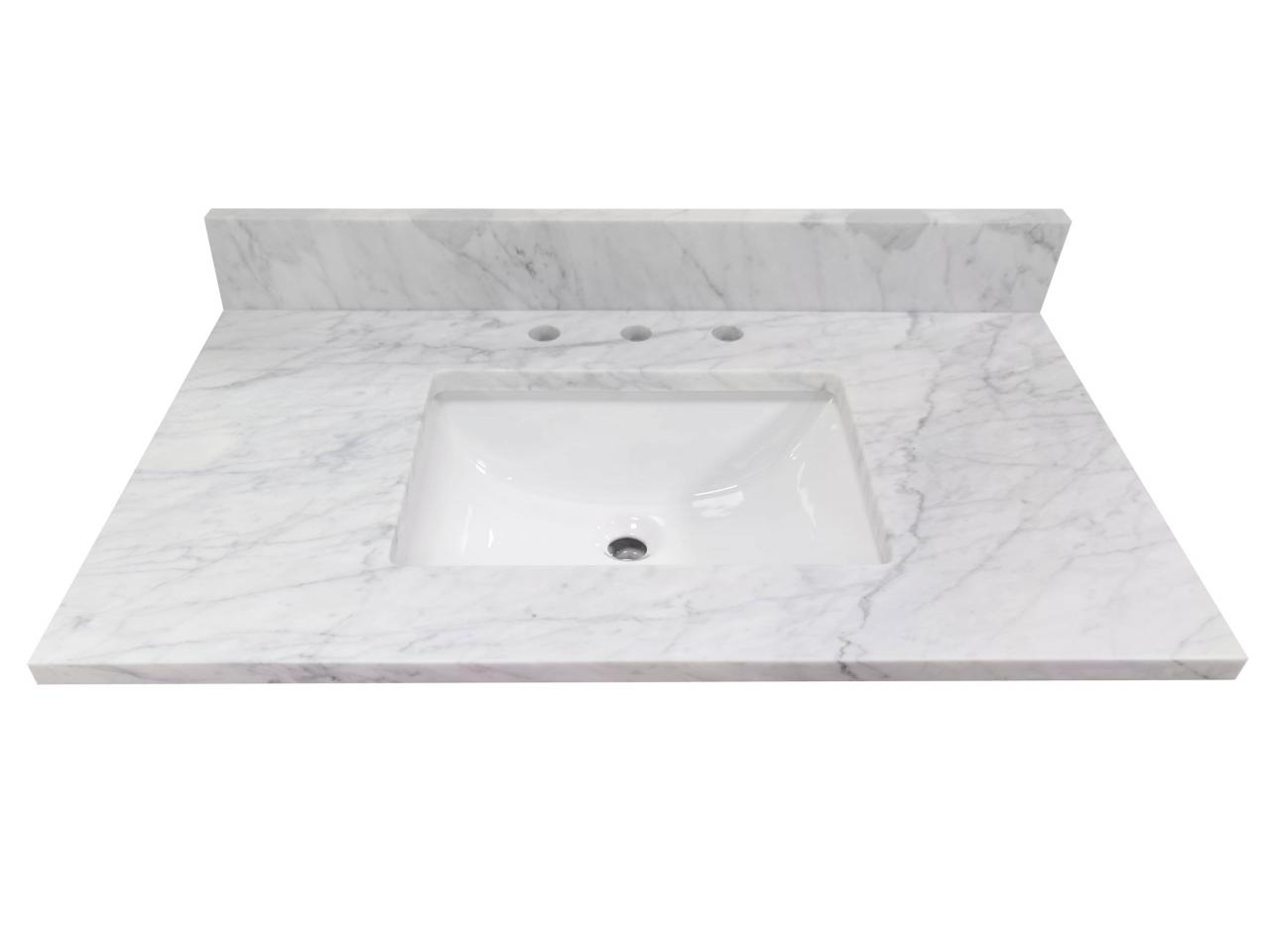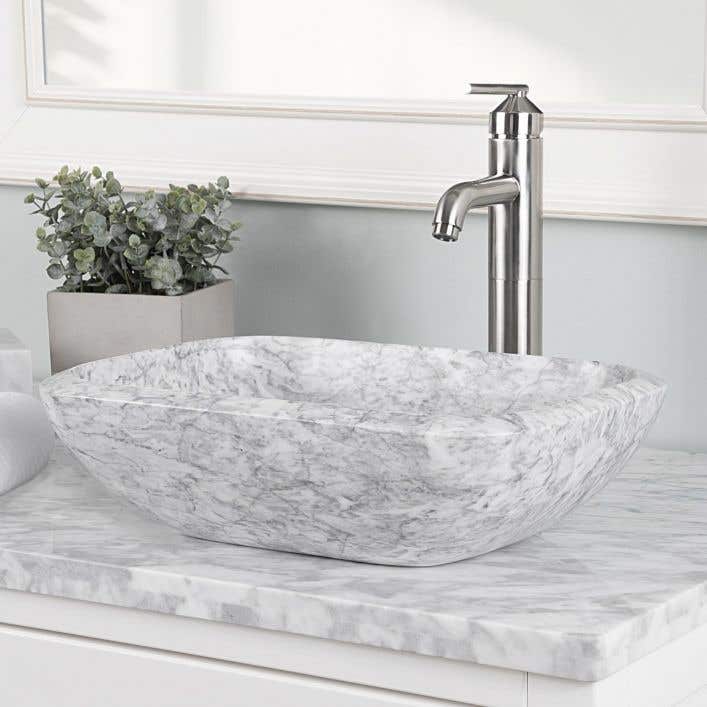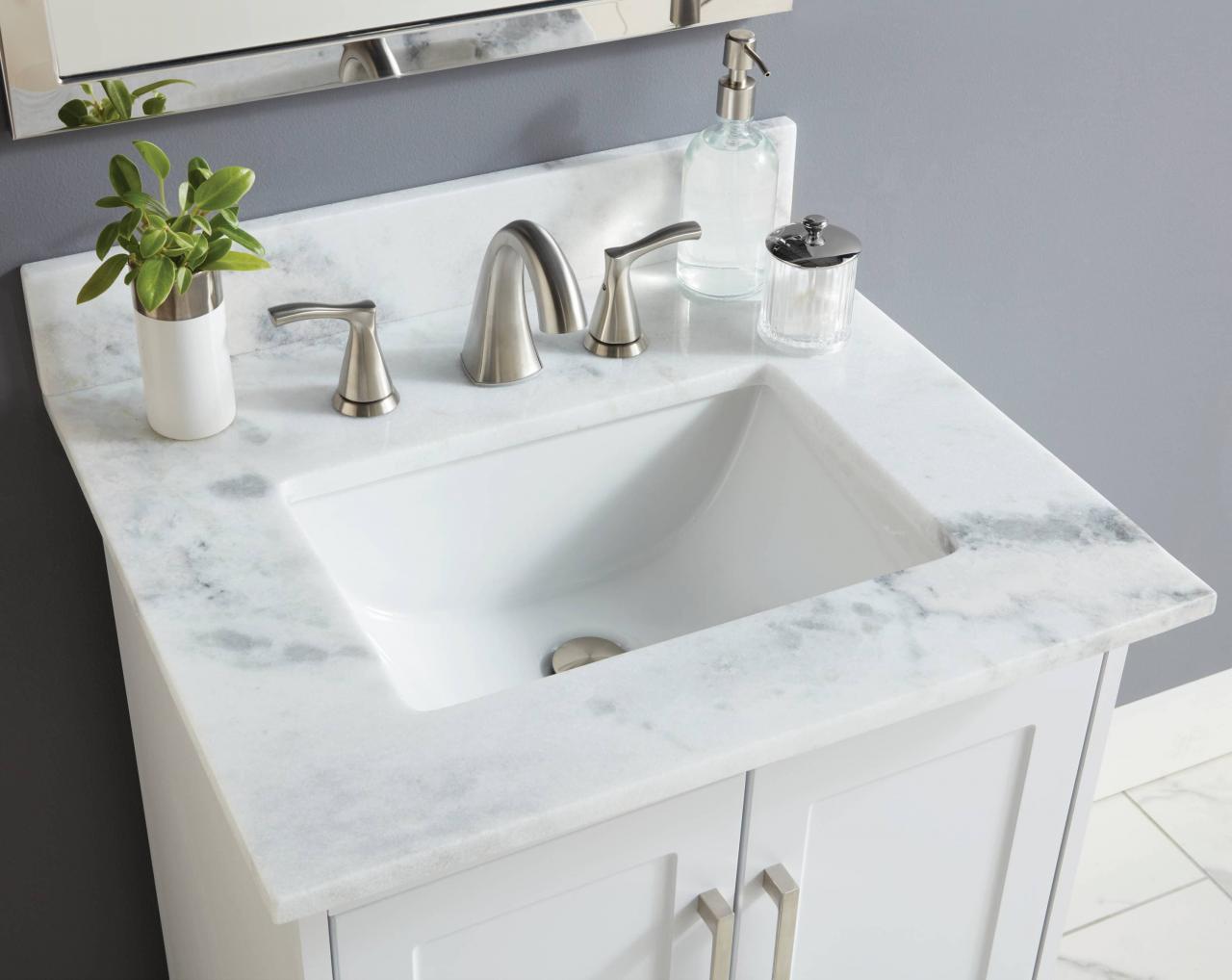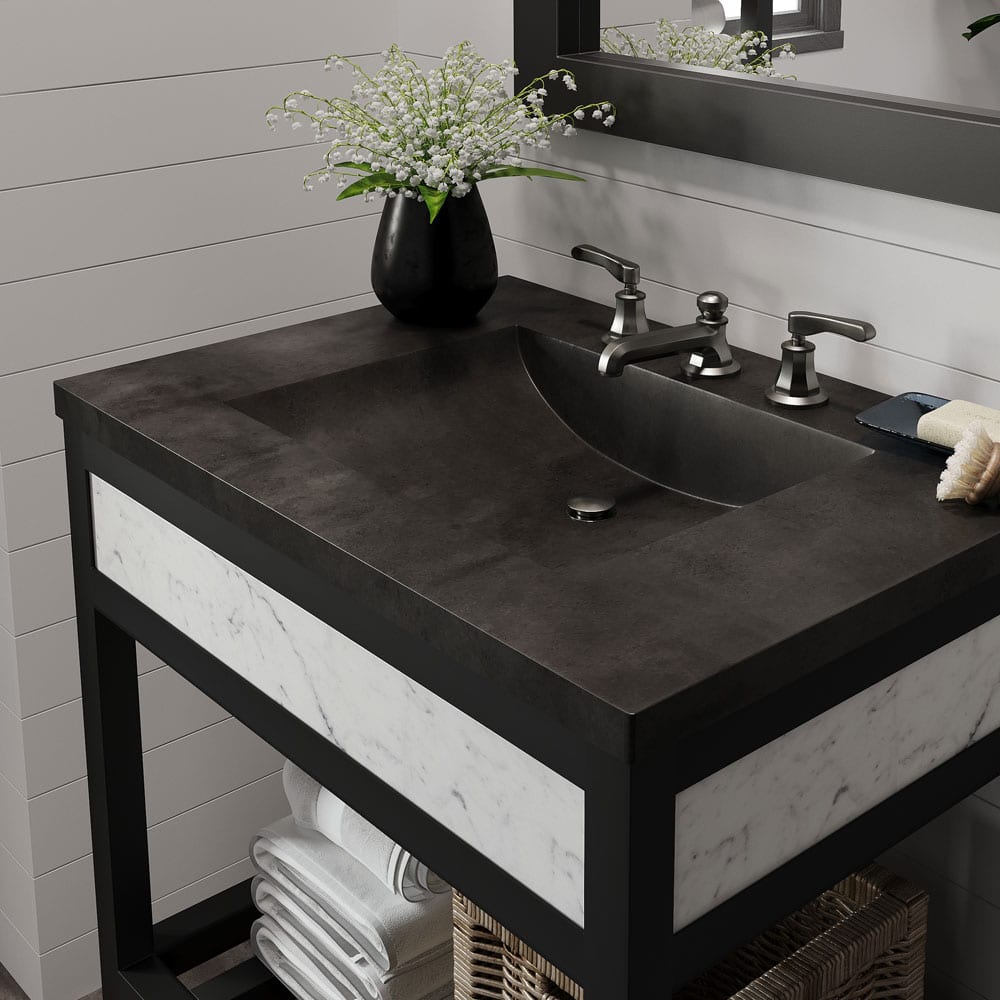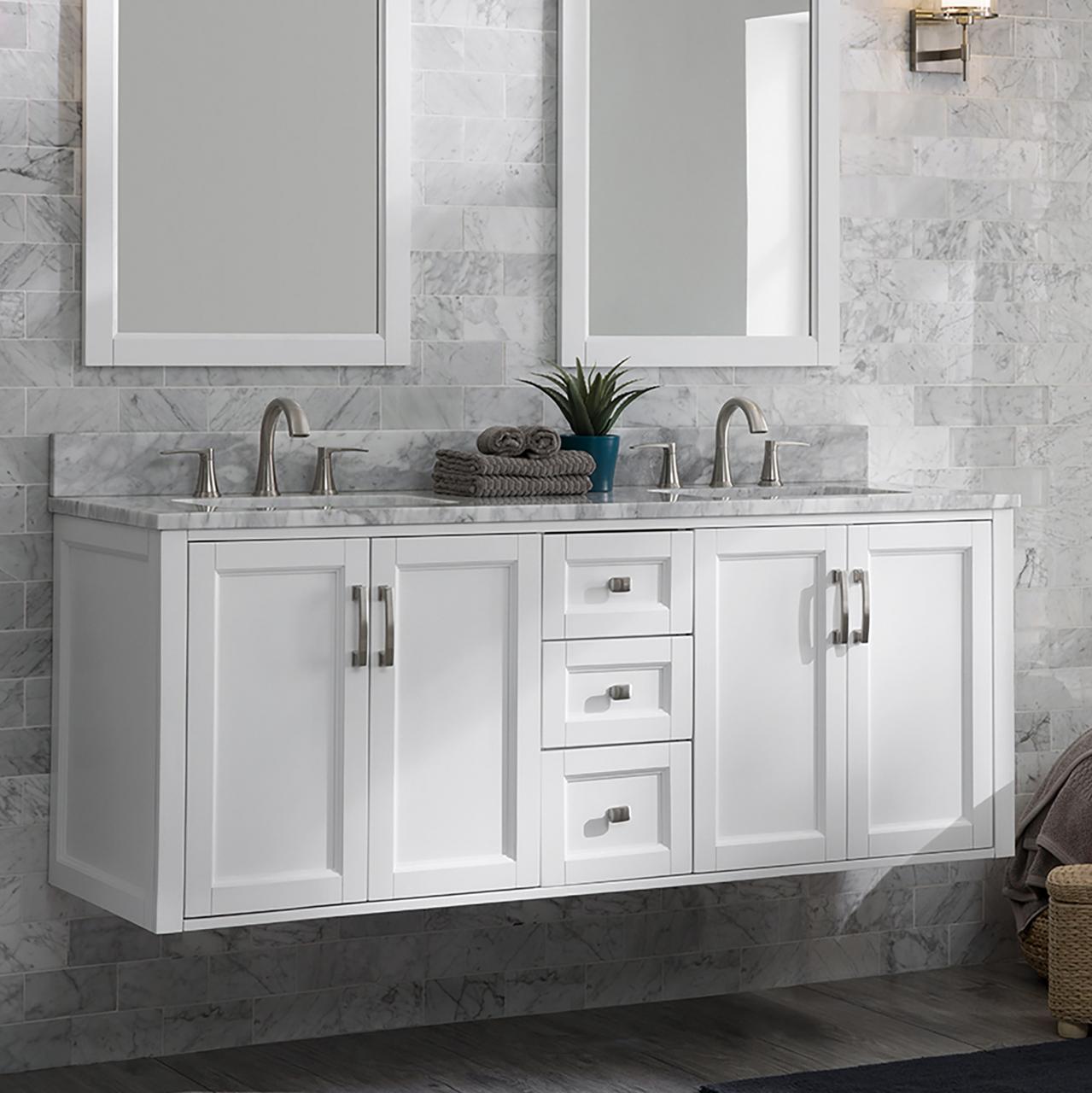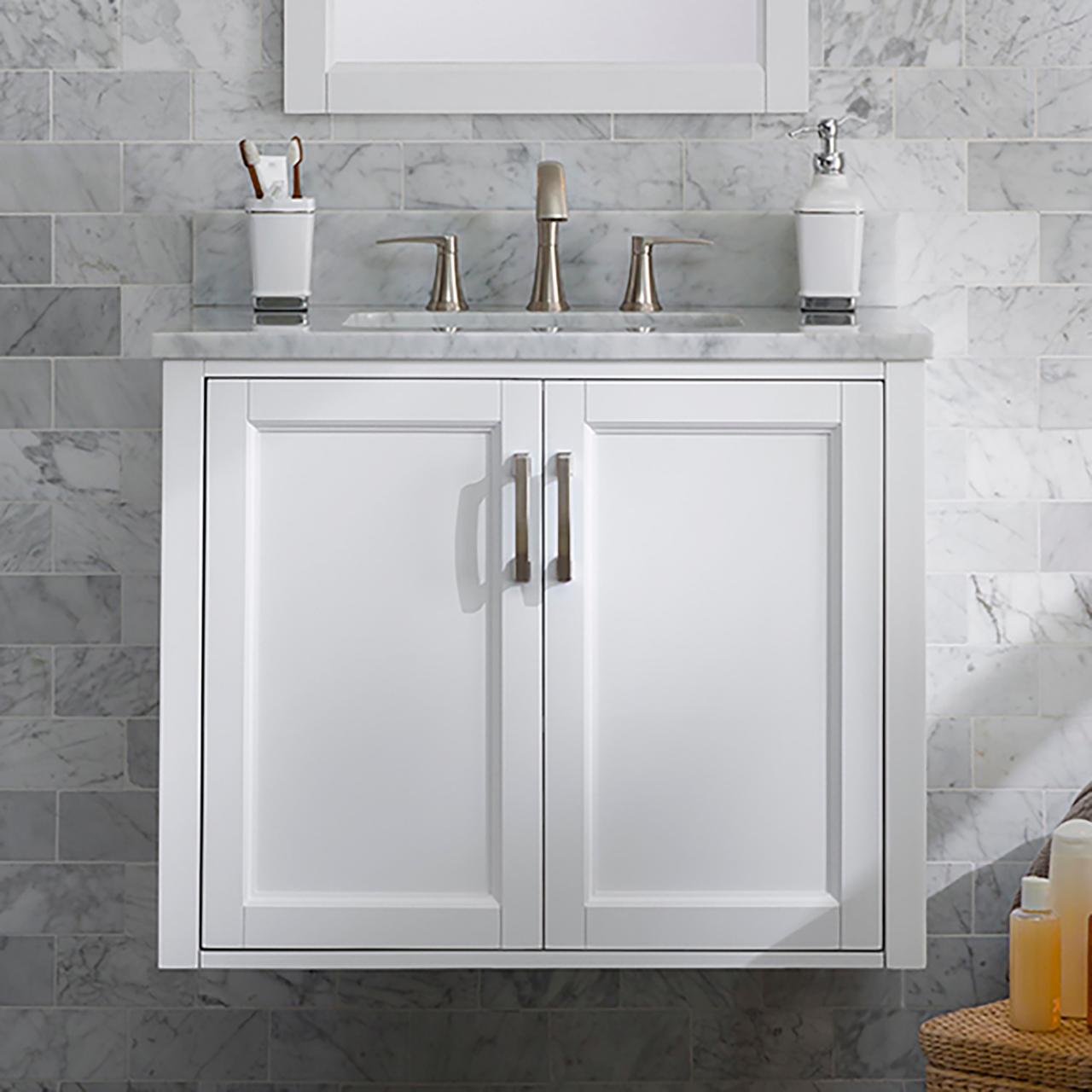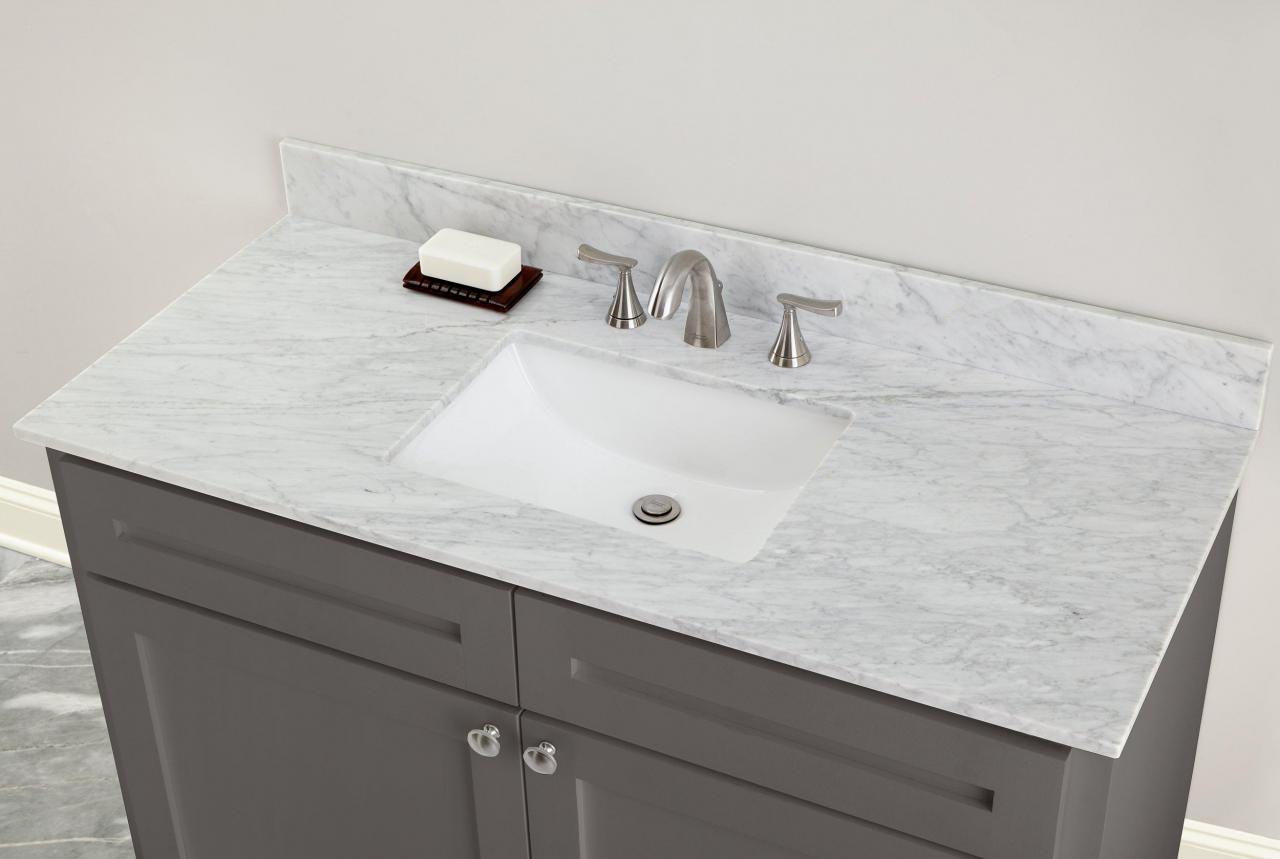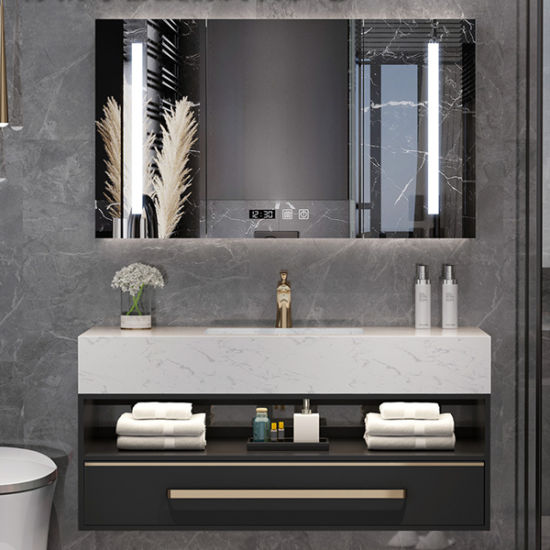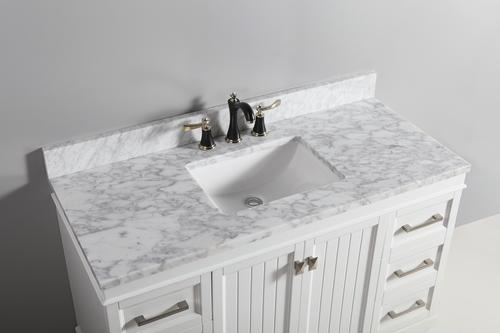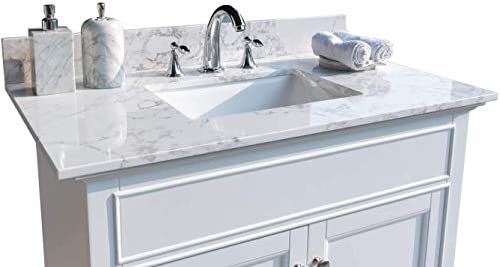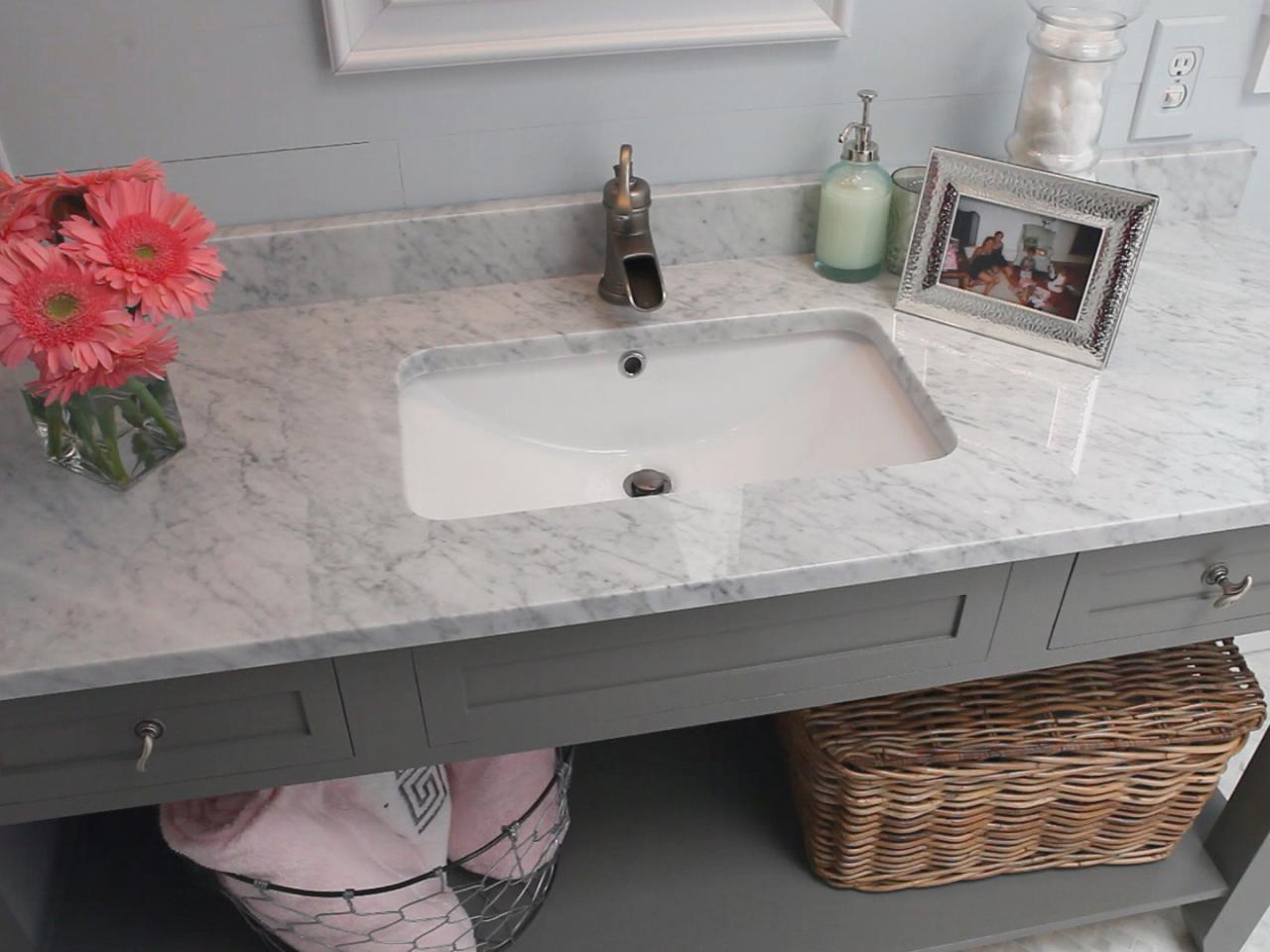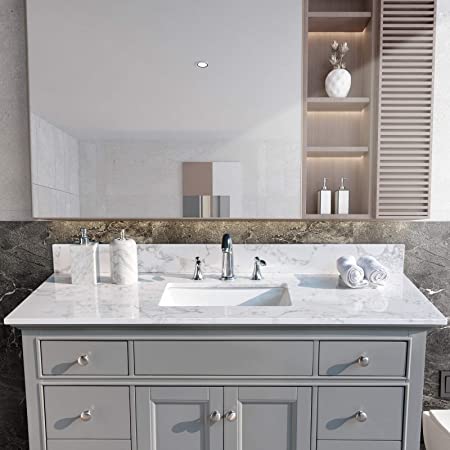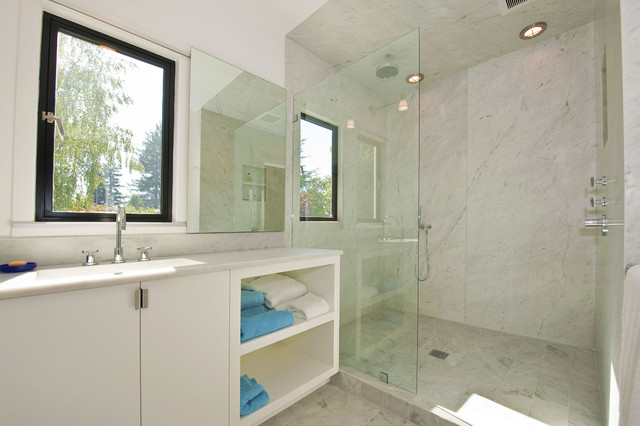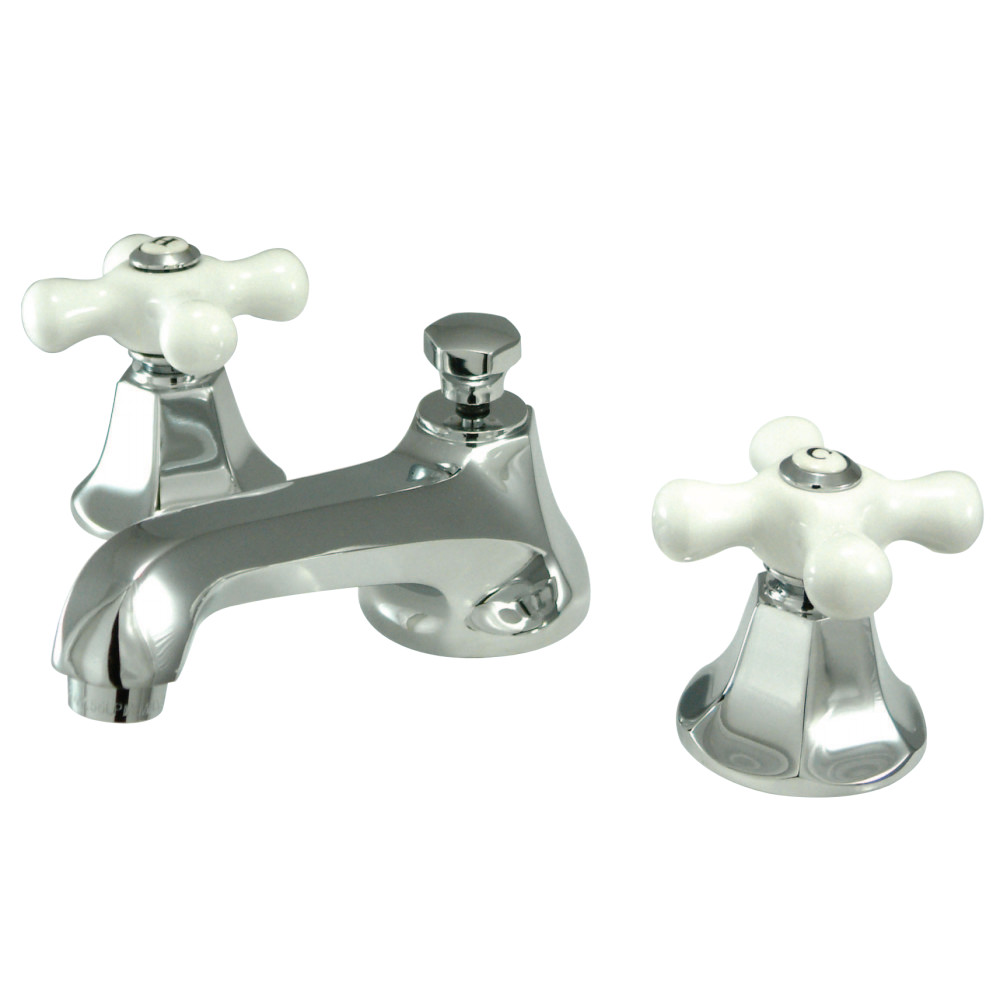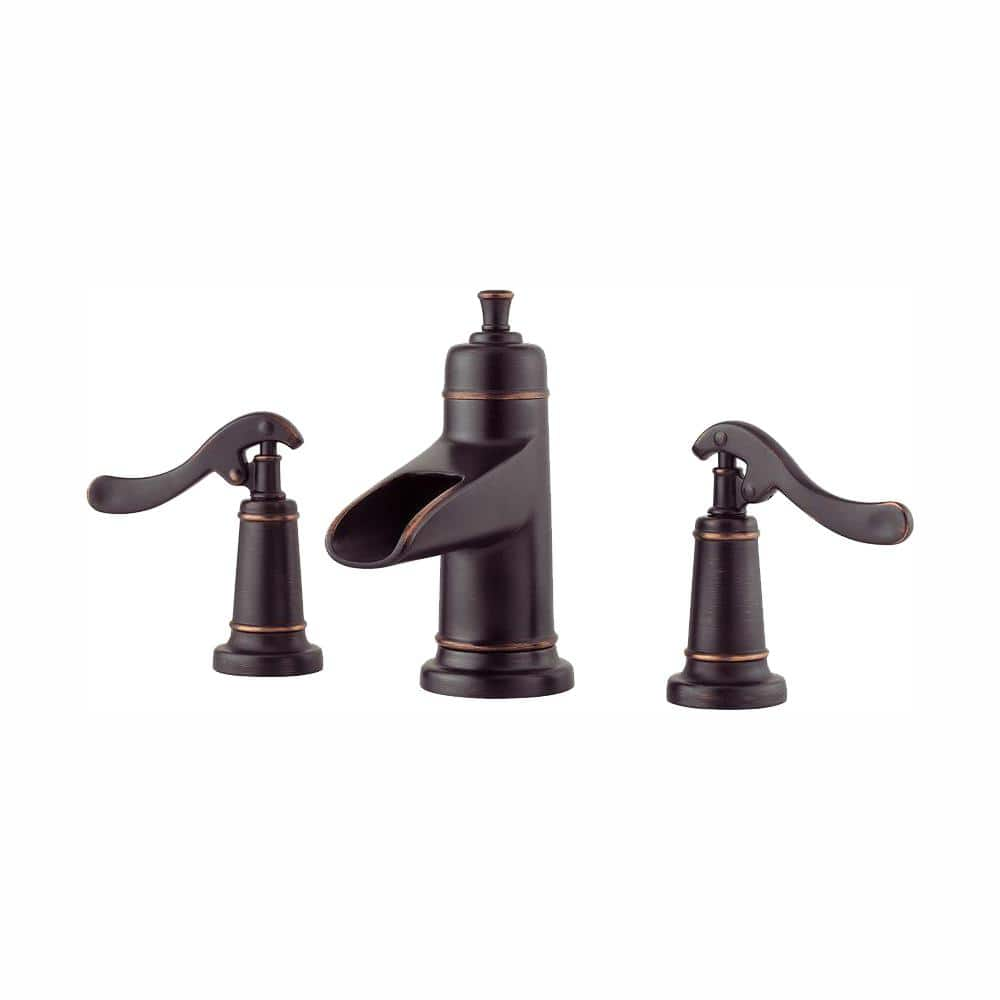The Elegance of Marble Sinks: Why They’re a Top Choice for Bathrooms
Marble sinks have long been a symbol of luxury and elegance in bathroom design. Their timeless appeal, combined with the unique patterns and colors found in natural marble, makes them a popular choice for homeowners looking to add a touch of sophistication to their space. Below are the reasons why I believe marble sinks are a top choice for bathrooms, drawing from my own experiences and observations.
- Unmatched Aesthetic Appeal: Marble sinks offer a level of aesthetic beauty that few other materials can match. Each piece of marble is unique, with its veining and coloration, making every sink one-of-a-kind. This natural variation adds a level of depth and character to a bathroom that other materials simply can’t replicate.
- Timeless Elegance: The elegance of marble is truly timeless. Whether you’re designing a modern, minimalist bathroom or a more traditional space, a marble sink can seamlessly fit in. Its classic look never goes out of style, ensuring that your bathroom remains chic and sophisticated for years to come.
- Versatility in Design: Marble sinks come in a wide variety of shapes, sizes, and finishes, making them incredibly versatile. Whether you prefer a sleek, polished look or a more rustic, honed finish, there’s a marble sink to match your taste. I’ve found that this versatility allows me to experiment with different design elements without worrying about clashing styles.
- A Statement Piece: A marble sink is not just a functional piece in your bathroom; it’s a statement. It draws the eye and can serve as the focal point of the room. In my designs, I’ve often used marble sinks as the centerpiece, around which the rest of the bathroom decor is built.
- Increased Home Value: Installing a marble sink can also be a smart investment. Bathrooms with high-end materials like marble tend to increase the overall value of a home. This is something I’ve seen time and again in real estate; potential buyers are often willing to pay a premium for the luxury and elegance that marble brings.
- A Luxurious Feel: There’s something inherently luxurious about marble. The cool, smooth surface feels indulgent and sophisticated. Every time I use a marble sink, I’m reminded of the spa-like atmosphere it creates, making everyday routines feel a bit more special.
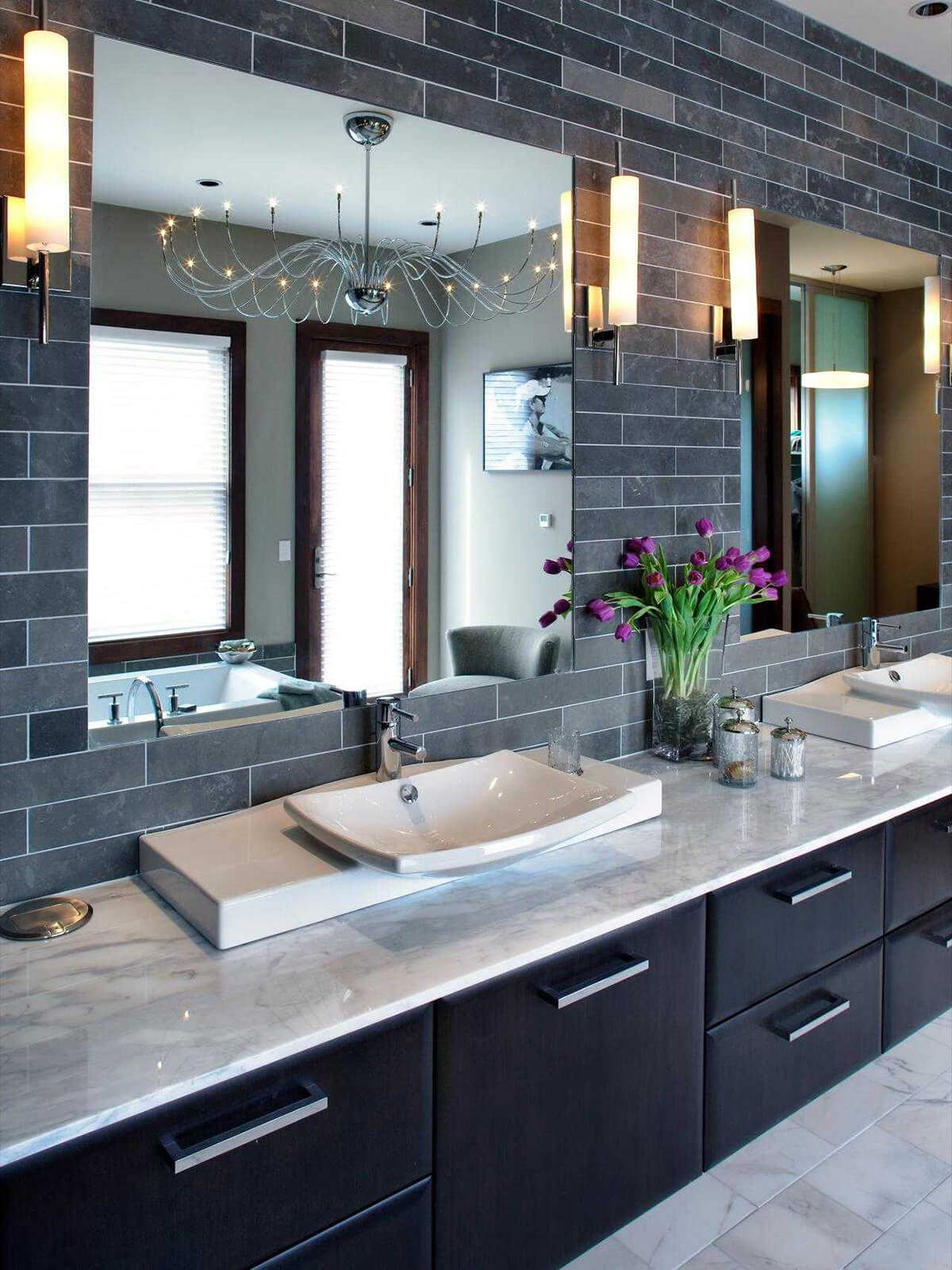
Types of Marble Sinks: Finding the Perfect Style for Your Bathroom
Choosing the right marble sink for your bathroom can be a delightful challenge, given the variety of styles available. From vessel sinks to under-mount designs, each type offers its own set of benefits and aesthetic qualities. Let’s explore some of the most popular types of marble sinks and share my thoughts on how to find the perfect one for your bathroom.
Vessel Marble Sinks: Vessel sinks sit atop the countertop, making a bold and elegant statement. I love how they immediately draw attention and add a touch of drama to the bathroom. The variety of shapes, from round to rectangular, allows you to customize the look to suit your style.
Under-Mount Marble Sinks: Under-mount sinks offer a sleek, streamlined appearance, as they are installed beneath the countertop. This type of sink is perfect for those who prefer a minimalist design. I appreciate how under-mount sinks make cleaning the countertop easier, as there are no edges or lips to collect dirt and grime.
Pedestal Marble Sinks: Pedestal sinks, with their freestanding design, bring a touch of classic elegance to any bathroom. They’re ideal for smaller spaces where you want to make a big impact without overwhelming the room. I’ve found that pedestal sinks often become the focal point in more traditional bathroom designs.
Wall-Mounted Marble Sinks: Wall-mounted sinks are a fantastic choice for modern, minimalist bathrooms. These sinks are attached directly to the wall, freeing up floor space and giving the bathroom a more open feel. I like how they create a sleek, contemporary look while still showcasing the beauty of marble.
Console Marble Sinks: Console sinks combine the elegance of marble with the functionality of a vanity. They typically feature a marble top supported by metal or wooden legs. This type of sink is perfect for those who want the luxury of marble with the practicality of additional storage space underneath. I’ve used console sinks in both traditional and modern bathroom designs, and they always add a touch of sophistication.
Integrated Marble Sinks: Integrated sinks are carved from a single piece of marble, creating a seamless and cohesive look. These sinks are perfect for those who want a clean, uninterrupted surface. I’m particularly fond of integrated sinks in contemporary designs, where the focus is on simplicity and clean lines.
Incorporating a Marble Sink Into Your Bathroom Design: Tips and Ideas
Incorporating a marble sink into your bathroom design can elevate the entire space, making it feel more luxurious and refined. However, it’s important to carefully consider how the sink will fit into the overall design to ensure a cohesive look. Below are some tips and ideas on how to seamlessly integrate a marble sink into your bathroom.
Consider the Bathroom’s Color Scheme
When choosing a marble sink, it’s essential to consider the color scheme of your bathroom. Marble comes in a range of colors, from classic white with grey veining to darker, more dramatic shades. I recommend selecting a marble color that complements or contrasts with the existing colors in your bathroom to create a harmonious look.
Match the Sink with the Countertop
One of the key decisions to make is whether to match the marble sink with the countertop or to create contrast. In my experience, a matching marble sink and countertop can create a seamless, elegant look, while contrasting materials can add visual interest and depth to the design.
Choose the Right Faucet
The faucet you choose can significantly impact the overall look of your marble sink. I suggest selecting a faucet that complements the style and finish of the marble. For instance, a sleek, modern faucet works well with a polished marble sink, while a more ornate faucet might be better suited to a traditional, honed marble sink.
Incorporate Marble Accents
To create a cohesive look, consider incorporating other marble accents into your bathroom design. This could include marble tiles, a marble vanity top, or even marble accessories like soap dishes or trays. I’ve found that these additional touches help to tie the entire design together.
Balance the Design with Other Materials
While marble is undoubtedly a stunning material, it’s important to balance it with other materials in your bathroom to avoid an overly cold or sterile look. I recommend mixing marble with warmer materials like wood or brass to create a more inviting and balanced design. This combination has always worked well for me in creating spaces that feel both luxurious and welcoming.
Think About Lighting
The way your marble sink is lit can enhance its natural beauty. I’ve found that soft, ambient lighting works best to highlight the unique veining and texture of marble. Consider installing wall sconces or pendant lights near the sink to create a warm, inviting glow that accentuates the marble’s elegance.
The Benefits of Choosing a Marble Sink Over Other Materials
Marble sinks are not just about aesthetics; they also offer a range of practical benefits that make them a superior choice for many homeowners. Let’s find out the advantages of choosing a marble sink over other materials, based on my experiences and insights.
Durability and Longevity
Marble is a naturally strong and durable material, making it an excellent choice for sinks. Unlike some other materials that may chip or crack over time, a well-maintained marble sink can last for decades. I’ve seen marble sinks that still look stunning after many years of use, a testament to their durability.
Heat Resistance
One of the practical benefits of marble is its heat resistance. Marble sinks can withstand high temperatures, making them ideal for bathrooms where hot water and styling tools are frequently used. I’ve always appreciated this quality, especially in bathrooms where functionality is just as important as aesthetics.
Easy to Clean
Marble sinks are relatively easy to clean and maintain. With regular care, they can retain their beautiful appearance for years. I find that a simple routine of wiping down the sink with a mild cleaner and avoiding harsh chemicals is all it takes to keep marble looking its best.
Eco-Friendly Material
Marble is a natural material, which makes it an eco-friendly choice for your bathroom. Unlike synthetic materials that require extensive processing, marble is quarried directly from the earth. I’ve always preferred using natural materials like marble in my designs, as they offer a more sustainable and environmentally friendly option.
Increased Home Value
As mentioned earlier, marble sinks can increase the value of your home. Prospective buyers often view marble as a high-end, luxury material, which can make your property more attractive in the real estate market. In my experience, investing in quality materials like marble can pay off in the long run.
Aesthetically Pleasing
Beyond its practical benefits, marble is simply beautiful. The natural veining and unique patterns found in each piece of marble make it a work of art in its own right. I believe that the beauty of marble is unparalleled, and it’s one of the main reasons why I continue to choose it for bathroom sinks.
Caring for Your Marble Sink: Maintenance Tips and Tricks
While marble sinks are durable and long-lasting, they do require some special care to maintain their beauty. Below I’ll share my top tips and tricks for caring for your marble sink, based on my own experiences with this elegant material.
Regular Cleaning
Regular cleaning is essential to keep your marble sink looking its best. I recommend using a mild, pH-balanced cleaner specifically designed for natural stone. Avoid harsh chemicals and abrasive cleaners, as these can damage the surface of the marble. In my experience, a soft cloth and warm water are often all you need for daily cleaning.
Seal Your Marble Sink
Sealing your marble sink is crucial to protect it from stains and water damage. Marble is a porous material, meaning it can absorb liquids if not properly sealed. I suggest sealing your sink at least once a year, or more frequently if your sink sees heavy use. Applying a high-quality marble sealer helps create a protective barrier against spills and moisture, keeping the marble looking pristine. I’ve found that sealing the sink is a straightforward process that significantly extends the life and appearance of the marble.
Avoid Acidic Substances
Acidic substances like vinegar, lemon juice, and certain cleaners can etch the surface of marble, leaving dull spots or stains. I always recommend being cautious with what comes into contact with your marble sink. If you accidentally spill something acidic, clean it up immediately with water to prevent damage.
Prevent Scratches
While marble is durable, it can still scratch if exposed to abrasive materials. To protect your sink, I suggest using a soft cloth or sponge for cleaning and avoiding metal or rough scrubbers. I also advise being mindful of what you place in or around the sink, as sharp objects can easily cause scratches.
Address Stains Promptly
Despite your best efforts, stains can sometimes happen. If you notice a stain on your marble sink, it’s important to address it promptly. I recommend using a poultice made from a mixture of baking soda and water to lift the stain. Apply the poultice to the stained area, cover it with plastic wrap, and let it sit for 24-48 hours. After removing the poultice, clean the area with water and a soft cloth. This method has worked well for me in removing tough stains from marble.
Regular Polishing
Polishing your marble sink can help maintain its shine and luster. I usually recommend using a marble polishing powder or a polishing product designed specifically for natural stone. Regular polishing helps to restore the marble’s natural beauty and can even reduce the appearance of minor scratches and etching.
Common Mistakes to Avoid
Installing a marble sink can be a rewarding project, but it’s important to avoid common mistakes that could lead to problems down the road. Here are some of the most frequent mistakes I’ve encountered and how to avoid them to ensure your marble sink installation goes smoothly.
Incorrect Measurements
One of the most common mistakes is not taking accurate measurements before purchasing and installing a marble sink. I always stress the importance of double-checking your measurements to ensure that the sink will fit properly in the designated space. Incorrect measurements can lead to installation headaches and additional costs, so it’s worth taking the time to get it right from the start.
Ignoring Weight Considerations
Marble sinks are significantly heavier than sinks made from other materials, so it’s crucial to consider the weight during installation. I’ve seen cases where insufficient support led to issues with the countertop or vanity. Make sure your vanity or countertop is strong enough to support the weight of the marble sink and consider reinforcing it if necessary.
Improper Sealing
Failing to properly seal the marble sink after installation is a mistake that can lead to staining and water damage. As mentioned earlier, sealing is essential for protecting the porous surface of the marble. I recommend sealing the sink immediately after installation and reapplying the sealant regularly to maintain protection.
Not Hiring a Professional Installer
While it may be tempting to save money by installing a marble sink yourself, I’ve found that hiring a professional installer is often worth the investment. Marble is a delicate material that requires precise handling and installation techniques. A professional installer has the experience and tools needed to ensure a flawless installation, which can save you from costly mistakes and repairs later on.
Forgetting About Plumbing Requirements
Another common mistake is overlooking the plumbing requirements when installing a marble sink. I always advise ensuring that the plumbing is properly aligned with the sink’s drain and faucet openings before installation. Misaligned plumbing can lead to leaks and water damage, so it’s important to address this during the installation process.
Neglecting Maintenance Planning
Lastly, many people make the mistake of neglecting to plan for the ongoing maintenance of their marble sink. As we’ve discussed, marble requires regular cleaning, sealing, and polishing to maintain its beauty. Before installing a marble sink, I recommend considering whether you’re prepared to commit to the necessary maintenance to keep the sink looking its best.
Pairing Marble Sinks with Other Bathroom Fixtures for a Cohesive Look
Creating a cohesive bathroom design involves carefully selecting fixtures and finishes that complement each other, and pairing a marble sink with the right elements is key to achieving a harmonious look. Below are some tips on how to pair your marble sink with other bathroom fixtures to create a well-balanced and stylish space.
Coordinate with Faucets and Hardware
The faucet and hardware you choose can make a big difference in how your marble sink is perceived. I suggest opting for finishes that complement the color and veining of the marble. For example, brushed nickel or matte black faucets can add a modern touch, while antique brass or gold finishes can enhance the sink’s classic elegance. In my experience, coordinating the sink with the right hardware creates a polished and cohesive look.
Match with the Vanity or Countertop
The vanity or countertop plays a crucial role in the overall design, so it’s important to select materials that complement your marble sink. I often recommend choosing a vanity or countertop in a material that contrasts with marble, such as wood or quartz, to create visual interest. Alternatively, you can match the sink with a marble countertop for a seamless, luxurious appearance.
Complement with Bathroom Tile
Tiles are another important element to consider when pairing your marble sink with other fixtures. I like to use tiles that echo the colors or patterns found in the marble, whether it’s through similar veining or complementary shades. This helps to tie the design together and create a cohesive, unified look. You can also use tiles with a different texture or finish to add contrast and depth to the design.
Incorporate Matching Accessories
Accessories like soap dispensers, trays, and towel bars can enhance the overall aesthetic of your bathroom. I recommend selecting accessories that complement the style and finish of your marble sink and other fixtures. For instance, marble or metal accessories in the same finish as your faucet can create a cohesive, coordinated look. These small touches can make a big difference in pulling the entire design together.
Balance with Lighting Fixtures
Lighting is a critical element in bathroom design, and the right lighting fixtures can enhance the beauty of your marble sink. I’ve found that wall sconces or pendant lights in a matching finish can create a balanced, well-lit space that highlights the sink’s natural beauty. Soft, warm lighting is particularly effective in bringing out the subtle veining and color variations in marble.
Consider the Overall Bathroom Style
Finally, it’s important to consider the overall style of your bathroom when pairing your marble sink with other fixtures. Whether you’re going for a modern, traditional, or eclectic look, make sure that all the elements work together to create a cohesive design. I’ve found that keeping the overall style in mind helps to ensure that the marble sink doesn’t feel out of place, but rather enhances the bathroom’s overall aesthetic.
Bianco Carrara Marble 49 in. Vanity Top includes Backsplash
Nordic Bathroom Cabinet Combination Bathroom Sink Basin Toilet
Tuscany® 49″ x 22″ Carrara Marble Vanity Top with Wave Rectangular
Galaga Beige Marble Vessel Sink
Engineered Stone White Carrara Marble Countertop
Marble Countertops
Bathroom Vanity Single Sink, White Carrara Marble
Related Posts:
